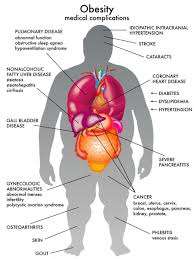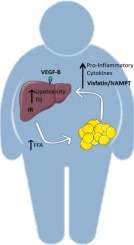The relationship between obesity and various health conditions is well-documented, but its impact on liver health, particularly the rise of non-alcoholic fatty liver disease (NAFLD), is often underreported.
NAFLD is now one of the leading causes of chronic liver disease worldwide, closely linked to obesity.
This article explores how obesity contributes to fatty liver disease, its implications, and strategies for managing this growing health crisis.
“Is Obesity Fueling Fatty Liver Disease” Article Index:
- What is Fatty Liver Disease?
- How Obesity Contributes to Fatty Liver
- The Health Risks of Fatty Liver Disease from Obesity
- Can You Have Fatty Liver Without Being Overweight?
- Treatment Options for Fatty Liver Due to Obesity
- Childhood Obesity and Fatty Liver
- Conclusion: Is Obesity the Main Culprit?
What is Fatty Liver Disease?
Let’s talk about fatty liver disease—sounds like a culinary term, but it’s actually a bit more serious.
So, what is fatty liver?
Well, it’s when excess fat accumulates in your liver cells, turning your liver into a storage unit for fat that no one asked for. Now, when you hear “what is fatty liver disease,” think of it as your liver waving a red flag, saying, “Hey, something’s not right!”
Medically, this condition is known as hepatic steatosis, and when it progresses, it’s called non-alcoholic steatohepatitis (NASH).
But what is steatosis of liver or steatosis in the liver?
It is basically your liver getting bogged down with fat, causing inflammation, and potentially scarring. And that, my friend, is what is liver hepatic steatosis—fat build-up that can wreak havoc if left unchecked.
Wondering, “What is NASH in liver disease?” NASH is a more advanced form where inflammation and liver cell damage occur, and it’s not related to alcohol. It’s like your liver being stuck in a never-ending hangover.
And yes, it is as unpleasant as it sounds.
In essence, if your liver were a hardworking employee, fatty liver disease would be like dumping extra paperwork on its desk. Eventually, it gets overwhelmed, and things start to go downhill.
So, keep an eye on that liver—it is more than just an accessory to your dinner parties!

How Obesity Contributes to Fatty Liver?
Let’s dive into the question: “How does obesity affect the liver?”
Well, imagine your liver as the office hero who handles everything with ease—until one day, it is buried under piles of extra work.
That extra work, in this case, is fat, courtesy of obesity. When you carry excess weight, your body starts storing fat not just in obvious places like the belly or thighs, but also in the liver.
This is how obesity causes fatty liver.
The University of Lübeck conducted a study showing that people with obesity have a much higher risk of developing non-alcoholic fatty liver disease (NAFLD). This is because excessive fat accumulation triggers inflammation and liver cell damage.
So, how does obesity cause fatty liver disease exactly?
When there is more fat than the liver can handle, it starts storing it in its cells. Over time, this can lead to hepatic steatosis (fancy term for fat build-up in the liver), making it harder for the liver to function properly.
And if that’s not bad enough, this can progress to more severe conditions. How does obesity cause liver disease beyond just fatty liver?
Persistent fat build-up can lead to scarring (fibrosis) and even cirrhosis, where liver function takes a serious hit.
So, the next time you think about the effects of obesity, remember it is not just about what’s visible—it is also what is happening inside, where your liver is silently screaming, “Help, I am drowning in fat!”
The Health Risks of Fatty Liver Disease from Obesity
Fatty liver disease, particularly non-alcoholic fatty liver disease (NAFLD), has become one of the most prevalent liver conditions globally—especially among individuals with obesity. While early stages may seem benign, scientific evidence warns that unchecked NAFLD can evolve into a life-threatening condition with serious systemic consequences.
Here is how fatty liver disease related to obesity poses a threat to overall health:
Progression to NASH:
NAFLD can worsen into non-alcoholic steatohepatitis (NASH), which includes not only fat accumulation in the liver but also inflammation and hepatocyte damage. A study published in Hepatology highlights that up to 25% of people with NAFLD may progress to NASH, increasing the risk of permanent liver scarring.
Fibrosis and Cirrhosis:
Persistent liver inflammation promotes fibrosis—excessive scar tissue that disrupts liver function. Over time, this may lead to cirrhosis, where the liver becomes irreversibly damaged and fails to function properly. Research from the Journal of Hepatology confirms that obesity significantly accelerates this fibrosis progression.
Increased Cardiometabolic Risk:
Fatty liver due to obesity doesn’t stop at the liver. It’s strongly associated with cardiovascular disease, arterial stiffness, and insulin resistance. According to the American Heart Association, NAFLD is an independent risk factor for heart attacks and stroke.
Hepatomegaly as a Warning Sign:
An enlarged liver (hepatomegaly), particularly in obese individuals, often signals advanced disease. The University of Bonn study found hepatomegaly to be a red flag for progressing fibrosis and early liver failure.
Increased Cancer Risk:
NASH has also been linked to hepatocellular carcinoma (liver cancer), even in the absence of cirrhosis, as highlighted in The Lancet Gastroenterology & Hepatology.
Ignoring fatty liver disease can be a silent gamble—with the liver paying the price first, followed by the heart and metabolic system.
>>> Want to Learn How I Cured MY Fatty Liver Naturally at Home??? Click Here to Find Out! <<<
Can You Have Fatty Liver Without Being Overweight?

Treatment Options for Fatty Liver Due to Obesity
The primary approach to managing NAFLD involves lifestyle changes, such as diet, exercise, and weight loss.
Studies have shown that reducing body weight by 7-10% can significantly lower liver fat and inflammation.
A fatty liver obesity treatment plan typically focuses on a low-calorie diet, regular physical activity, and monitoring liver health.
For individuals with severe obesity, bariatric surgery for NAFLD has shown promising results. Consuming a healthy diet that helps in fat loss is also effective in treating fatty liver.
A study involving post-bariatric patients indicated significant improvements in liver function and reductions in liver inflammation markers, suggesting that weight-loss surgery can be an effective intervention for severe NAFLD.
FAQs on Fatty Liver and Obesity
Q-1: How does belly fat “feed” the liver even when I’m not eating?
A-1: Visceral fat leaks free fatty acids (FFAs) straight into the portal vein—your liver’s front door. In obesity, that drip becomes a firehose: the liver soaks up FFAs, reassembles them into triglycerides, and stores them as fat. Example: two people with the same weight but different fat distribution—one with a larger waist—will often show higher fasting FFAs and a fattier liver at the same calorie intake.
Q-2: Is insulin resistance just about high sugar—or does it change how the liver makes fat?
A-2: Both. Insulin resistance lets the liver pump out glucose and paradoxically revs up de novo lipogenesis (turning carbs—especially refined starches and sugary drinks—into fat). Hyperinsulinemia keeps the lipogenic switch “on,” so a high-carb snack can convert to liver fat faster in someone with obesity than in someone insulin-sensitive. That’s why modest carb quality upgrades often shrink liver fat before big weight changes appear.
Q-3: Why do some people with obesity get severe fatty liver while others don’t?
A-3: It’s a three-way tug: genetics, fat placement, and inflammation. Variants in genes like PNPLA3 can make hepatocytes “cling” to fat; visceral/ectopic fat drives higher portal FFA load; and low-grade adipose inflammation (TNF-α, IL-6) impairs fat export and mitochondrial burning. A person with central obesity plus a high-risk variant may progress from simple fat to steatohepatitis faster than a peer with the same BMI but more subcutaneous fat and a low-risk genotype.
Q-4: Can the gut and sleep really push liver fat up, independently of what I eat?
A-4: Yes. Obesity is often accompanied by altered gut permeability and microbiome shifts that deliver more endotoxin to the liver, amplifying inflammation. Meanwhile, sleep apnea and late-night circadian misalignment boost sympathetic tone and cortisol, which raise nighttime glucose and FFA release. Net effect: the liver sees more fuel and more inflammatory “noise” 24/7—even before breakfast.
Q-5: What early clues signal “obesity-driven liver fat” and what changes dent it fastest?
A-5: Clues: growing waistline, mild ALT/AST bumps (often ALT > AST early), high triglycerides with low HDL, and ultrasound/CAP (FibroScan) showing steatosis. Fast movers: a modest, steady calorie deficit; protein-forward meals with fewer refined carbs; 150–300 weekly minutes of aerobic work plus 2–3 resistance sessions; and a consistent sleep window. Real-world example: swapping sugary drinks for water, adding a 10–15-minute post-meal walk, and two weekly full-body lifts can cut liver fat and lower ALT within weeks—often before the scale shows dramatic change.
Childhood Obesity and Fatty Liver
The rise of fatty liver disease in childhood obesity is particularly alarming.
Children with obesity are at a higher risk of developing NAFLD, which can progress to more severe liver conditions in adulthood.
Early intervention is crucial, as fatty liver in children can lead to long-term health issues, including cirrhosis and liver cancer.
Research from Helmholtz Center Munich emphasized the need for early lifestyle interventions in children with obesity to prevent the progression of NAFLD.
Addressing fatty liver in childhood obesity involves promoting a balanced diet, regular physical activity, and, in some cases, medical or surgical interventions to manage the condition effectively.
Takeaway: Is Obesity the Main Culprit?
Obesity is undeniably a significant driver of fatty liver disease.
While genetic and lifestyle factors also play a role, the direct link between obesity and NAFLD makes weight management a crucial aspect of treatment and prevention.
Effective strategies include lifestyle modifications and, in severe cases, bariatric surgery to reduce liver fat and inflammation.
So, is obesity fueling fatty liver disease?
Absolutely.
I have personally tried green smoothie diet plan for weight loss and lost several pounds naturally without spending a single dime on expensive weight loss methods.
Addressing obesity through comprehensive and sustained efforts is essential not only for liver health but for overall well-being.
Continued research and public health initiatives are necessary to tackle this growing health crisis.
References: